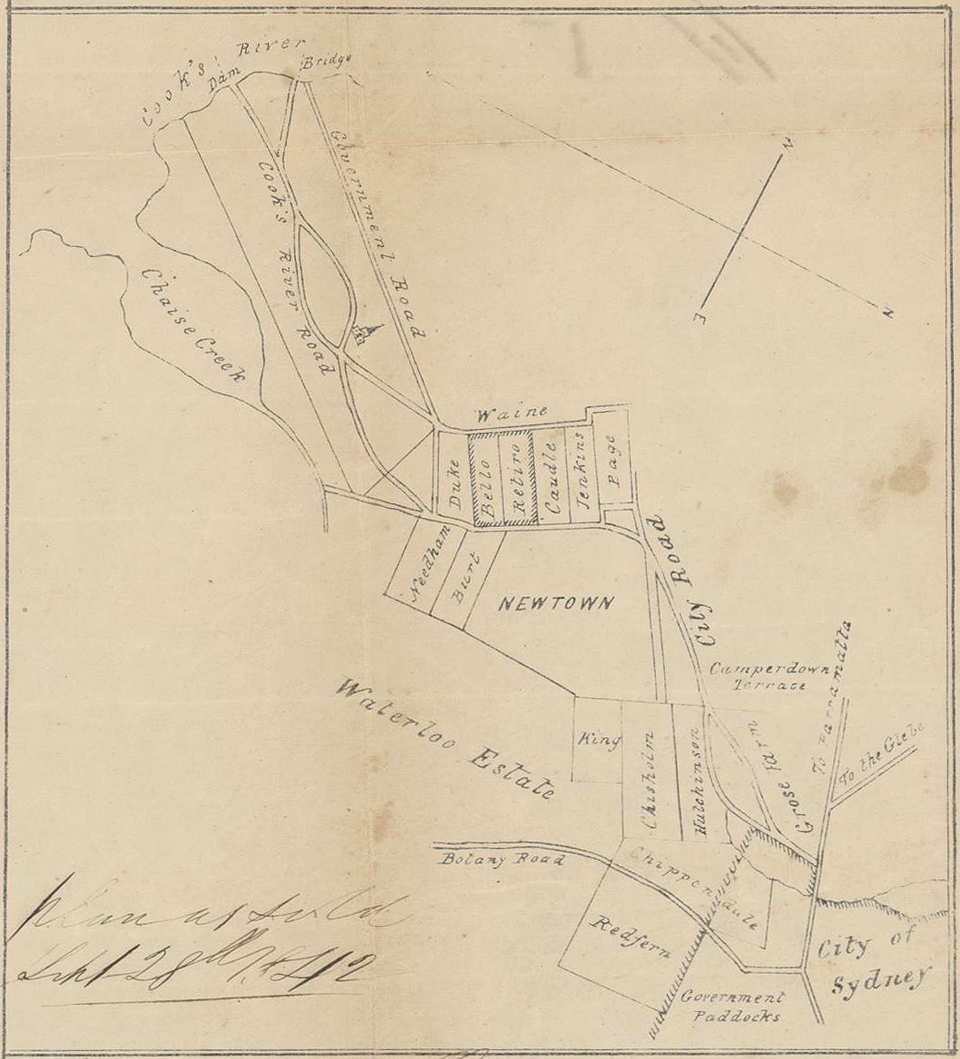The Dictionary of Sydney was archived in 2021.
Plan of the Newtown area, September 1842

Contributed By
(Detail of Plan of the villa Bello Retiro on the Cook's River Road for sale by auction by Mr Stubbs, on the 28 September 1842)

